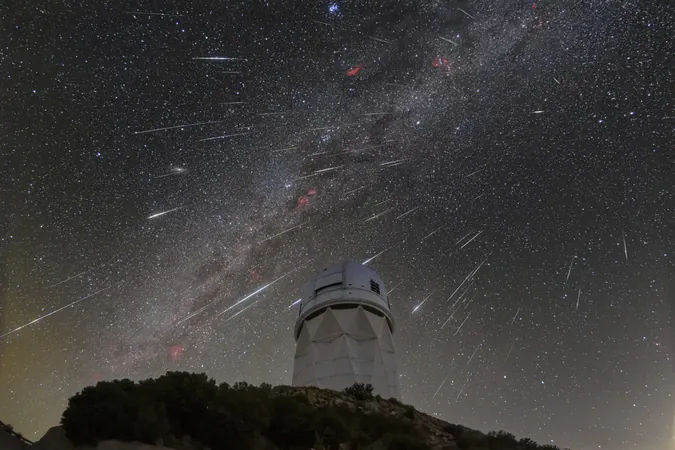
Get Ready for an Astronomical Show: Meteor Shower Over the Weekend!
2024-12-12
Author: William
Introduction
If you thought you missed out on all the excitement, don't fret—it’s not too late to treat your eyes to a dazzling cosmic display! The highly anticipated Geminid meteor shower is set to peak on Friday, December 13th, and offers stargazers a chance to witness one of the most impressive celestial events of the year.
Expert Insights
Dr. Rosanna Tilbrook, an expert from the MacMillan Space Centre in Vancouver, shared some thrilling insights about this year’s shower: “We expect to see up to 115 meteors per hour on Friday night!” While various factors such as sky darkness and the constellation’s positioning will affect visibility, it's a prime opportunity for enthusiastic skywatchers to catch numerous shooting stars flickering across the night sky.
Challenges in Urban Areas
However, locals in Vancouver might have to contend with some challenges. The weather forecast predicts a cloudy sky with periods of rain, which can hinder the view. Dr. Tilbrook noted that meteors blaze brightly high in the atmosphere, often above the clouds, but observers in urban areas like Vancouver may struggle against light pollution.
Best Viewing Locations
“For the best meteor spotting experience, it's advisable to head out of the city,” Dr. Tilbrook recommended, suggesting spots like Spanish Banks Beach and Porteau Cove, or even the designated dark sky reserve at McDonald Park in Abbotsford.
Visibility of Jupiter
Adding to the stellar experience, Jupiter will also be prominently visible in the night sky at its closest approach to Earth. “It will shine like a bright star near the constellation Gemini, where the meteors originate,” explained Dr. Tilbrook. If you’re lucky enough to have a pair of binoculars, you might glimpse some of Jupiter’s moons, which should appear like tiny stars alongside the giant planet.
The Geminid Meteor Shower
While many meteor showers are the result of comet debris, the Geminids uniquely stem from the asteroid 3200 Phaethon. As these rocky fragments from space plummet into Earth's atmosphere, they meet air resistance that superheats them, creating the unmistakable trails of light we know as shooting stars. NASA's William Cooke adds, “The nature of asteroid debris often leads to spectacular fireballs, as these tough rocks can penetrate deeper into the atmosphere.”
Upcoming Astronomical Events
The mesmerizing Geminid meteor shower will remain visible until December 21st, after which the next notable event, the Ursids, will peak on December 22nd. Mark your calendars and prepare to be enchanted by nature's spectacular light show!









 Brasil (PT)
Brasil (PT)
 Canada (EN)
Canada (EN)
 Chile (ES)
Chile (ES)
 España (ES)
España (ES)
 France (FR)
France (FR)
 Hong Kong (EN)
Hong Kong (EN)
 Italia (IT)
Italia (IT)
 日本 (JA)
日本 (JA)
 Magyarország (HU)
Magyarország (HU)
 Norge (NO)
Norge (NO)
 Polska (PL)
Polska (PL)
 Schweiz (DE)
Schweiz (DE)
 Singapore (EN)
Singapore (EN)
 Sverige (SV)
Sverige (SV)
 Suomi (FI)
Suomi (FI)
 Türkiye (TR)
Türkiye (TR)